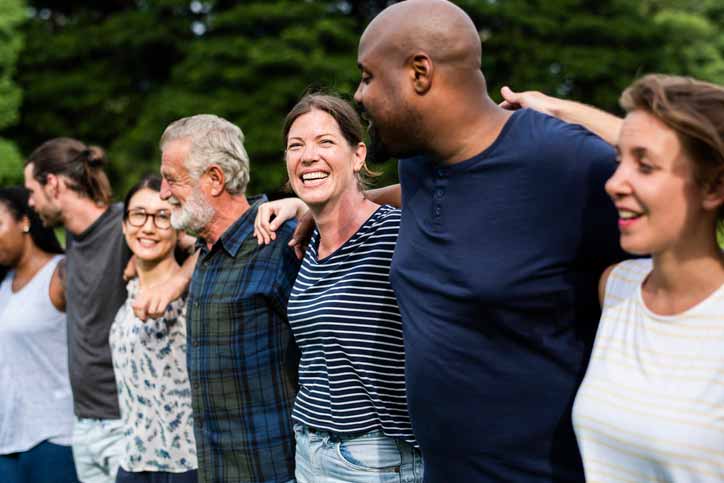By: Royer Cook, Ph.D.
The concept of “Blue Zones” was made popular by Dan Buettner’s best selling books describing areas of the world where people live measurably longer lives. The concept grew out of demographic work done by Gianni Pes and Michel Poulain, who identified Sardinia’s Nuoro province as the region with the highest concentration of male centenarians. When Pes and Poulain zeroed in on the cluster of villages with the highest longevity, they drew concentric blue circles on the map and began referring to the area inside the circle as the Blue Zone. Dan Buettner has identified longevity hotspots in Okinawa (Japan); Sardinia (Italy); Nicoya (Costa Rica); Icaria (Greece); and among the Seventh-day Adventists in Loma Linda, California. Buettner offers an explanation, based on empirical data and first hand observations, as to why these populations live healthier and longer lives.
It’s not surprising that so many people living in the Blue Zones live long, contented lives. As Patrick Mustain has written in his Scientific American blog:
Most people living in the Blue Zones enjoy physical activity incorporated naturally into their daily lives (like gardening or walking); a sense of purpose (like caring for grandchildren or civic volunteering); low stress levels and a slower pace of life; strong family and community connections; and a diet characterized by moderate caloric intake, mostly from plant sources.
That these people are living long and happy lives should not be surprising. For a while now we’ve known, generally, the lifestyle factors that contribute to unhealthier, shorter lives: sedentary jobs and transportation; increased screen time; reduced active recreation; a diet of highly processed, calorically dense and nutritionally deficient foods and growing portion sizes; social isolation; chronic stress; income inequality and social immobility—basically all features of a modern, consumer society. For decades, public health professionals and advocates have pointed to these things as appropriate targets for policies and actions meant to improve health and well being.
These comments underscore the fact that the health of people in the Blue Zones is not the result of having discovered some miraculous anti-aging elixir or regimen, but have occurred, in large part, simply by avoiding the toxic pitfalls of the modern lifestyle. Their longevity is not the result of having read the latest diet book or downloaded an app or strapped on a fitness tracking device. They don’t eat large amounts of meat or processed foods, lie in front of the tube with bag of Doritos or lead unrelentingly hectic, stressful lives. It also appears that they are not enmeshed in or heavily reliant on an elaborate medical/pharmaceutical system.
And their health practices are not viewed piecemeal; their lifestyles occur holistically in a natural, integrated way. Nutritional choices, social connections and physical activity are all incorporated into their daily lives, and their environment supports these practices. And the routinized integration of health practices into one’s life is a notable lesson in itself. However, it’s important to recognize that while we can learn some helpful lessons from the Blue Zones, these supportive environments are highly unusual, and in most cases (Loma Linda, CA a likely exception) vastly different (not to mention more primitive) from 21st century America. Not many of us are able – or willing – to live the life of a Sardinian goat herder! So you can’t just transplant their practices to your busy, often complicated workaday world.
In many respects, the Blue Zones health practices mirror the content of the CWH online programs: stay active, eat sensibly, manage stress, stay connected, etc. But in order to embrace these healthful practices and successfully adapt them to the challenges of modern life, it’s an immense help (in my admittedly biased view) to be armed with the behavioral strategies that are contained in the CWH online programs and discussed briefly in one of my other blogs.
Keep in mind that although the Blue Zones lifestyle appears simple (and in many ways it is), the factors contributing to one’s health and longevity are incredibly complex, and no one has definitively identified the specific mechanisms that determine how these people manage to live so long. Surely, their culturally induced practices contribute substantially to their longevity, but doubtless genetics and many other factors play a role as well.
Nevertheless, I remain a fan of Dan Buettner and the Blue Zones books, and I highly recommend them as both informative and inspiring.

